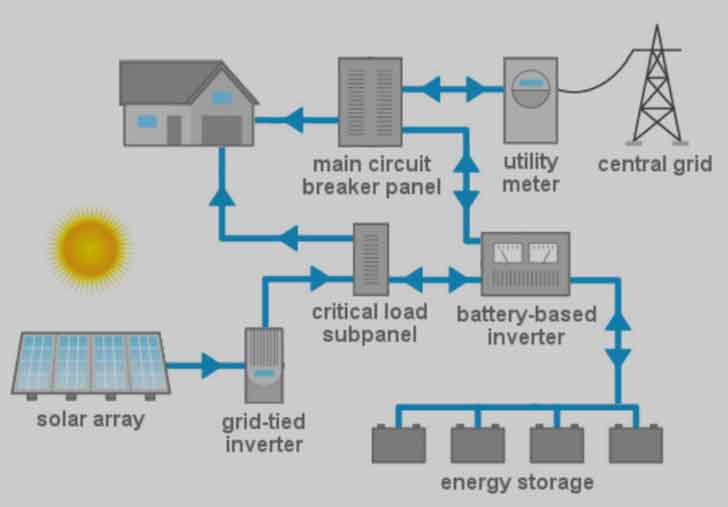
From the current development status and prospects of solar photovoltaic power generation, it can be seen that the solar photovoltaic power generation industry is developing rapidly. With the rapid development of China’s economy, the issue of energy shortage has become a focus of social attention. According to incomplete statistics, the national coal demand gap in 2005 was about 80 million tons, and the power supply shortage reached about 25 million kilowatts. However, we need to import 130 million tons of crude oil to basically meet domestic demand. Among them, the power industry, as a national pillar industry, occupies an important position in the national economy. The large-scale use of fossil fuels, such as oil and coal, will inevitably bring pollution to people’s lives and the environment, facing increasingly severe environmental problems in the country and global climate issues.
In 2009, China made a commitment internationally to meet the 15% energy demand for non fossil fuels by 2020 and to reduce carbon dioxide emissions per unit of GDP by 40% to 45% by 2020. In order to ensure the achievement of the national economic and social development goals, the 12th Five Year Plan will become a critical period for China’s economic transformation and energy structure adjustment, as well as a critical period for the development of new and renewable energy in China. On the one hand, solar photovoltaic power generation is not limited by energy sources, manufacturing materials, and development space, and will be the main body of non fossil energy and alternative energy in China’s future. The economically exploitable resources of hydropower, wind energy, and biomass energy in the world are limited, with only about 8TW, while the economically exploitable resources of solar energy are as high as 600TW, making it the only energy source that can guarantee human future needs. The manufacturing material of solar cells, silicon, has a content of up to 26% in the Earth’s crust, without resource shortage or depletion issues. Solar photovoltaic power generation belongs to solid-state power generation, which has no rotating components and does not require water for power generation. It can be easily combined with buildings, with arbitrary scale and short construction period. It can be directly installed in the load center for on-site power generation and use.
Research and practice have shown that the energy directly radiated from the sun to the Earth is very abundant, widely distributed, renewable, and does not pollute the environment. Every 40 seconds, there is equivalent to 21 billion barrels of oil, which is equivalent to the energy consumed by the world in a day. Therefore, solar energy is recognized by the international community as an ideal alternative source of non renewable energy. According to predictions from international authoritative institutions, by the 1960s, i.e. 2060, the proportion of direct solar energy utilization worldwide will develop to between 13-15% of the world’s energy composition, while the proportion of renewable energy in the energy structure as a whole will be greater than 50%.
① Technical principles and performance indicators;
There is an important conclusion in sampling control theory: when narrow pulses with equal impulses but different shapes are added to links with inertia, their effects are basically the same. Impulse refers to the area of a narrow pulse. The effect mentioned here is basically the same, which means that the output response waveform of the link is basically the same. When they are respectively added to the same link with inertia, their output response is basically the same. If the output waveforms are analyzed using Fourier transform, their low-frequency bands are very close, with only slight differences in the high-frequency bands.
The above principle can be called the area equivalence principle, which is an important theoretical basis for PWM control technology. The control of SPWM waves can be divided into calculation method and modulation method. Calculation method: The output frequency, amplitude, and number of pulses within half a cycle are given. The intermediate interval of SPWM waveform can be accurately calculated. Control the switching equipment of the inverter circuit based on the calculation results. That is to obtain the required PWM wave. Modulation method: It is a modulation signal that outputs a waveform. The reception of the modulated signal serves as the carrier, and the signal modulation of the modulated PWM waveform. Generally, isosceles triangles and sawtooth waves are used as carriers. However, there are generally many applications of isosceles triangular waves. Let’s study the isosceles triangle wave below. Its linearity is symmetrical with width and length. When it intersects with any twisted modulation wave in general, for the intersection point.
If the switching device controls the switch of the circuit, the amplitude of the pulse signal width is proportional. Solar inverters convert direct current energy (batteries, storage batteries) into direct current electricity (usually 220v50Hz sine or square wave). Emergency power supply usually converts a DC battery into 220V AC. Simply put, a solar inverter is a device that converts direct current (DC) into alternating current (AC). It consists of an inverter bridge, control logic, and filtering circuit.
② Creativity and progressiveness of technology;
(1) The DC input end of the solar inverter has a DC input, and the input end is connected to the power grid;
(2) Charge its own DC bus;
(3) Enter standby mode;
(4) When the DC input voltage exceeds 170V, the solar inverter is ready for grid connection;
(5) Before grid connection, SG1KTL will automatically self check to confirm whether all necessary conditions for grid connection work are met before connecting to the grid and generating electricity.
③ Maturity, applicability, and security of technology
The product has been developed and is currently in trial use, with high safety.
